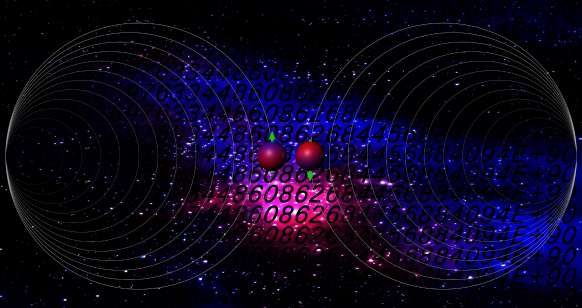
While we don’t currently use Quantum Computing techniques to simulate or help design magnetic circuits, there are several current applications of quantum computers that use magnetic field generation and control to operate.
Nuclear magnetic resonance (NMR) is a widely used technique in chemistry and physics to study the properties of atomic nuclei. NMR has also found application in quantum computing, where it is used to perform quantum information processing (QIP). Quantum computing is a rapidly growing field of research that utilizes the principles of quantum mechanics to perform complex computations faster than classical computers. The basic building block of a quantum computer is a qubit, which can exist in a superposition of two states (we can measure it in several positions along the two states), unlike a classical bit that can only be in one of two discreet states (0 or 1). NMR is one of the techniques used to implement qubits in quantum computers.
The basic idea of using NMR in quantum computing is to exploit the magnetic properties of atomic nuclei to store and manipulate quantum information. In NMR, a sample of molecules is placed in a strong magnetic field, causing the nuclei to align themselves with the field. A radiofrequency pulse is then applied to the sample, causing the nuclei to absorb energy and move into a higher energy state. When the pulse is turned off, the nuclei release the absorbed energy as a radiofrequency signal that can be detected and measured. This signal contains information about the chemical structure and dynamics of the molecules in the sample.
In quantum computing, a similar process is used to create and manipulate qubits. Instead of using molecules as a sample, a small number of atomic nuclei are isolated and placed in a magnetic field. The qubits are then created by applying radiofrequency pulses that cause the nuclei to transition between their ground and excited states. By controlling the timing and frequency of these pulses, quantum gates can be implemented, allowing for the manipulation of the qubits.
One of the major advantages of using NMR in quantum computing is that it is a well understood technique with a high degree of experimental control. NMR spectroscopy has been used in chemistry and biochemistry for decades, and many of the same principles and techniques can be applied to quantum computing. In addition, NMR allows for the creation of relatively large qubit registers, with up to 12 qubits having been demonstrated using this technique.
NMR also allows for the implementation of robust error-correction techniques. In quantum computing, errors can arise due to decoherence, which is the loss of quantum coherence caused by interactions with the environment. By encoding the qubits in the nuclear spin states of the sample, and using a technique called dynamical decoupling, it is possible to protect the qubits from environmental noise and achieve long coherence times.
However, there are also some downsides to using NMR in quantum computing. One of the major challenges is scalability. While NMR has been used to implement qubit registers with up to 12 qubits, it becomes increasingly difficult to scale up to larger numbers of qubits due to the technical challenges involved in isolating and manipulating individual nuclei. In addition, the relatively low coupling strengths between nuclear spins limit the complexity of the quantum gates that can be implemented.
NMR-based quantum computers are not very efficient in terms of speed. The time required to perform a single quantum gate operation can be milliseconds, which is several orders of magnitude slower than required for production application of quantum algorithms. This makes NMR-based quantum computers unsuitable for many applications, although they can still be useful for studying fundamental quantum phenomena.
NMR is a powerful tool for implementing qubits in quantum computing, with advantages including its well-established experimental techniques and robust error-correction capabilities. However, the limitations of scalability and speed make it less practical for many real-world applications.
